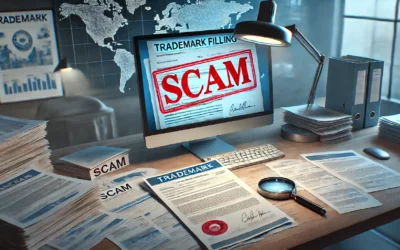The most fundamental principle of the EU trademark is its “unitary character”. Understanding this crucial principle will help you understand the most important benefits and weaknesses of the EU trademark.
The “unitary character” of an EU trademark is mentioned in the very first article of the EU trademark regulation. According to it:
“An EU trade mark shall have a unitary character. It shall have equal effect throughout the Union: it shall not be registered, transferred or surrendered or be the subject of a decision revoking the rights of the proprietor or declaring it invalid, nor shall its use be prohibited, save in respect of the whole Union”.
If the EU trademark is registered, it exists equally throughout the union. If it is not granted, it does not exist anywhere. It is not possible that the EU trademark exists only in some EU countries but not in others. It’s all or nothing.
As a result of this, if there is a registration obstacle in any part of the EU, it will prevent the registration for the whole union. The EU trademark cannot be divided geographically.
Registration obstacles
Descriptiveness and distinctiveness. In order to be registrable, a trademark needs to be “distinctive”. If a trademark describes the product or service, it is not distinctive. We have written about distinctiveness many times before (for example here, here and here).
The distinctiveness and descriptiveness of the EU trademark are assessed from the standpoint of each EU state. If the applied trademark describes the product or service in any EU language (for example Romanian), the EU trademark application is refused. The EU trademark must be distinctive in every member state in order to be registrable. The assessment of descriptiveness is not necessarily limited to official EU languages. It is possible that words that have a descriptive meaning in a non-EU language can make the trademark non-registrable. For example, Turkish is widely spoken in parts of Cyprus, and Russian is spoken in some parts of the Baltic states.
Prior registrations. Another important thing to know is that if there is a prior registration of the same or similar trademark in any EU country that can block the registration of your EU trademark. If another company has registered a trademark in Cyprus, that will bar the registration of later similar EU trademarks. Again, a registration obstacle in any part of the EU means that an EU trademark cannot be registered.
Other obstacles. Lack of distinctiveness and prior registrations are the most common obstacles for EU trademarks. However, these are not the only obstacles. For example, the application cannot be accepted if the mark is deceptive (for example, mark “Lactofree” for products containing lactose), or against public policy or principles of morality. These are also examined in every language understood in the EU. For example, in 2014 the Irish Cattle Breeding Federation sought to register the trademark EBI. They had used the mark as an abbreviation for “European Breeding Index”. The EUIPO refused to register the mark because it apparently meant “F**k” in Bulgarian. So if the mark has an offensive meaning in any EU language, it will be rejected.
Conflicts with other trademarks
It would seem logical that if there is a trademark infringement in one country, the same would be true for other countries as well. If the owner of the EU trademark can prevent the use of another trademark in one country, he should be able to prevent the use of the same mark in another country as well. In fact, Article 1 of the EU trademark regulation (see above) would also seem to suggest that.
Regardless, this is not always necessarily the case. Infringement actions are adjudicated at national courts. A Spanish court will determine whether there is an infringement in Spain, and a German court will determine whether there is an infringement in Germany.
It is possible that German and Spanish courts reach opposite conclusions. This is because the Spanish court will evaluate how Spanish people view the two marks, and the German court evaluates how Germans view the two marks. Language, culture and market factors play an important role in this assessment. It is possible, for example, that for linguistic reasons two marks are very similar phonetically and conceptually to Spanish consumers but much less similar to German consumers.
Your important backup plan if things go south – conversion
The biggest downside with the EU trademark is the fact that an obstacle in only one country is sufficient to block the whole application. To counteract this, there is something called “conversion”. Conversion allows the refused EU trademark to be turned into national trademarks in individual EU countries.
This is useful when the EU trademark has been refused because there is a registration obstacle relating to a particular country. If the application is refused because the mark is descriptive in French, it can be converted into national applications in other countries. The owner can choose the countries where he wants the conversion to have an effect. It is also important to know that conversion is not possible with respect to the country where the original problem is. If the applied mark is descriptive in Spanish, it cannot be converted into a national Spanish application.
Conversion will allow you to keep the original filing date, so there is no risk that somebody else has applied for a similar trademark in the time between your EU trademark application and conversion.
The bad news is that separate fees will have to be paid for each country that is included in the conversion. Converting your refused EU trademark for all remaining countries is expensive.
Wrap up
The main advantage of the EU trademark is that it is possible to cover the whole EU with one registration. It is a huge advantage and cost-saving for companies because they do not have to protect their trademark on a country-by-country basis. While the EUIPO fee is significantly more expensive than national fees, it is very cheap if you think that it covers 27 countries. In most EU countries the national fee is around 100-300 EUR. The EUIPO’s basic fee is 850 EUR, which is just over 30 EUR per country.
The main challenge of the EU trademark is that an obstacle in even one country or language prevents the registration as a whole. When planning to register an EU trademark, it is important to assess its distinctiveness and possible prior trademarks with respect to all EU member states.
Perfume decanting – legal or not?
Pefrume decanting operates in the grey area of trademarks. Read here what the legal risks are and whether perfume companies can object to that.



